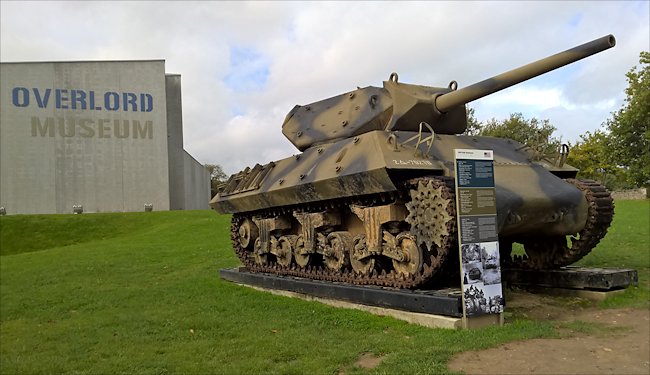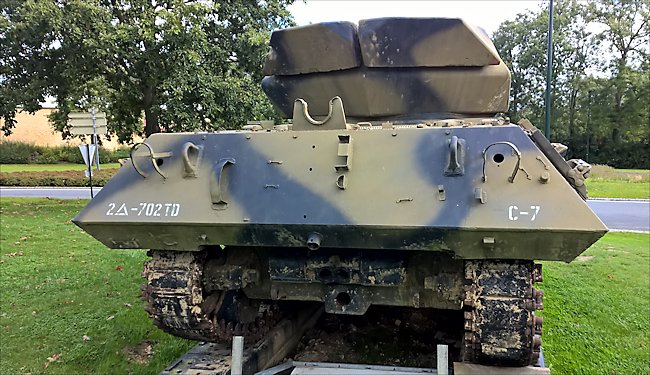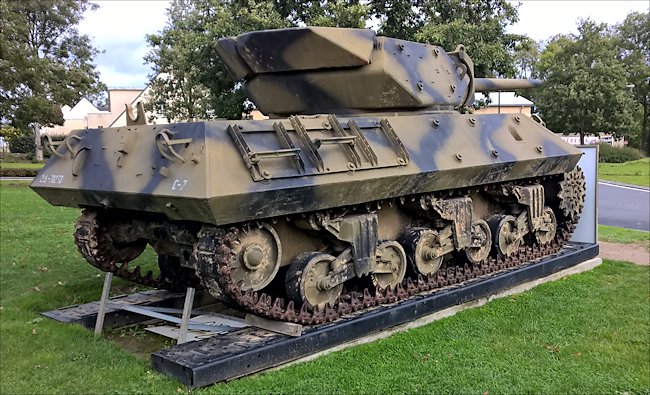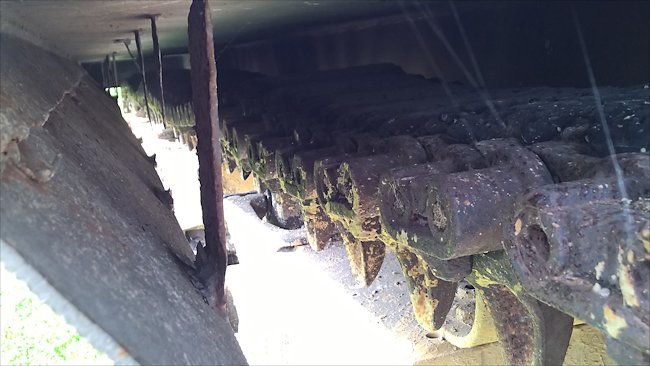Overlord Museum M10 Wolverine
M10 Wolverine Tank Destroyers were used by the Allies on D-Day 6th June 1944 and for the Battle of Normandy beach head break out. It was based on the M4 Sherman tank chassis but fitted with a 3-inch (76.2mm) gun. The US army called it the 3-inch Gun Motor Carriage, M10. The British named it the Wolverine.

3-inch Gun Motor Carriage, M10 Tank destroyer outside the Overlord Museum in Normandy
Location
The nearest village to the Overlord Museum is Colleville-sur-Mer. It is on the D514 costal road Hameau du Bray. You cannot miss it as there is a M4A1 Sherman tank, M10 Wolverine Tank Destroyer and British Sexton self-propelled artillery gun outside the front by the roundabout.

The M10 Wolverine Tank Destroyer was used by the Allies on D-Day
Specification
The M10 Wolverine was armed with a 3-inch (76.2mm) M7 Gun that could fire high explosive HE shells as well as armour piecing AP rounds. It could provide artillery support as well as act as a mobile tracked anti-tank gun. The crew were provided with cal.50 inch (12.7mm) Browning M2HB machine gun that affixed to the top of the turret. Its protective armour ranged in thickness from 9mm to 57.2mm.
It was powered by a General Motors 6046 diesel (conjoined twin 6-71s) engine that produced 375 hp. This gave the M10 Wolverine a top road speed of 32 mph (51 km/h). It had an operational range of 186 miles (300 km). It had a crew of 5: commander, driver and three gunners. It was produced between 1942-43 and 6,706 were made. It was used right up to the end of the war.

The rear of the M10 Wolverine tank destroyer's turret had to be weighted to counter balance the long 76.2mm gun.
The Development of the M10 Wolverine
Following the M7 Priest successful fitting of a 105mm howitzer on the medium tank chassis, plans were made in April 1942 to mount a high velocity gun on the medium chassis to provide a complementary SP vehicle for the Tank Destroyer Command. Designated T35 this vehicle utilised an early production M4A2 tank chassis, then just available, with an open-topped low sloped turret adapted from the turret design for the Tl Heavy Tank, and the 3 inch gun projected for the same vehicle.
However, the Tank Destroyer Board asked for a lower silhouette and angled hull superstructure, so an improved design T35E1 was drawn up, again on the M4A2 chassis, and incorporating these features. The T35El was modified with thinner armour than the T35 and the circular turret was subsequently abandoned in favour of a five-sided welded turret.
As finalised, the design was standardised in June 1942 and designated M10 GMC. In order to increase production, use of the M4A3 chassis was also authorised and vehicles built on this chassis were designated M10A1 GMC. Most of these were retained in America for training or converted to prime movers, M35. Others were allocated to Lend-Lease shipments to Britain.

The side armour of the M10 Wolverine was sloped but very thin
Grand Blanc Arsenal built 4,993 M10s between September 1942 and December 1943. Ford built 1,038 M10A1 between October 1942 and September 1943, and Grand Blanc built 675 M10A1, September-November 1943. 300 of the latter batch, however, were completed with new turrets as M36 (T71) GMC Jacksons Tank Destroyers.
A number of M10s were supplied to Britain in 1944 where they were designated '3 inch SP, Wolverine'. These were issued for combat service to British units in Italy and France; most were converted from late 1944 by replacement of the 3 inch gun with the British 17pdr gun, producing a much more potent tank destroyer than the M10 in its original form.
In its new guise the vehicle was designated '17pdr SP. Achilles Mk IC'. M10A1s similarly converted were designated Achilles Mk IIC. The original mantlet was retained in this conversion. First in service in limited numbers in 21 Army Group in early 1945, the Achilles was used for many years post-war by the British and sold to other friendly countries like Belgium. This was a most successful conversion.
D-Day 1944 books

